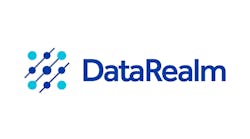The Open Group vendor-neutral technology consortium reported on Feb 5 at the ARC Industry Forum in Orlando, Fla., that it's launched its new Open-Process Automation Standard (O-PAS), Version 1.0. It's being published as a preliminary that addresses emerging technology, and may incorporate some changes before it's published as a full Open Group standard. Developed by the Open Process Automation Forum (OPAF), the standard will provide a vendor-neutral reference architecture to enable the construction of scalable, reliable, interoperable and secure process automation systems.
O-PAS 1.0 is focused on meeting the minimum standard and specification requirements for federated process automation systems, using an open and interoperable reference architecture. A key tenet of O-PAS is to adopt "fit-for-purpose" industry standards that presently exist in the marketplace. As a result, the standard will incorporate a variety of functional elements already provided by multiple vendors, including security with ANSI/ISA 62443 (adopted by IEC as IEC 62443), connectivity with OPC UA, and systems management with DMTF Redfish.
O-PAS 1.0 includes five main parts:
- Part 1—Technical architecture overview that's an architectural overview of the current release and how it fits with the overall targeted standard. It provides an overall perspective of the vision to be attained by the standard.
- Part 2—Security that uses ANSI/ISA 62443 to form the basis for compliance with the security requirements of the Open Process Automation (OPA) Ecosystem, and provides direction and consistency, from a security perspective, for the development of the other parts, particularly Part 4 and Part 5.
- Part 3—Profiles that specifies the primary profiles for O-PAS conformant components and how they contribute, along with Version 1.0, to the interoperability required for component connectivity and systems management.
- Part 4--Connectivity Framework (OCF) that specifies interfaces necessary for base connectivity for client-server and publish-subscribe environments.
- Part 5—System Management of a process automation system that covers different management functions, including managing hardware, operating systems and platform software, applications, and networks. Its scope addresses hardware management only. Future versions will address the other system management functions.
“The publication of O-PAS 1.0 represents a significant achievement by the Open Group and OPAF in a very short space of time,” says Steve Nunn, CEO of the Open Group. “End-user demand for standards enabling interoperability is increasing due to the business need to reduce capital costs for process control, along with making scalability and cybersecurity capabilities an inherent part of these systems. This new Standard will address both business and technical challenges in process automation and will resonate with many different vertical industries. My congratulations to the members of the Forum for all their hard work and commitment to success in this initiative.”
Ed Harrington, forum director for OPAF at the Open Group, added that, “The launch of the first OPAF standard demonstrates the growing need for practical guidance in the development of process control systems. Since the launch of the forum, we've seen more than 80 member organizations become directly involved with the development of this new reference architecture. The resulting O-PAS will be a ‘standard of standards’ to bring greater unity and consistency in how process automation is achieved.”



